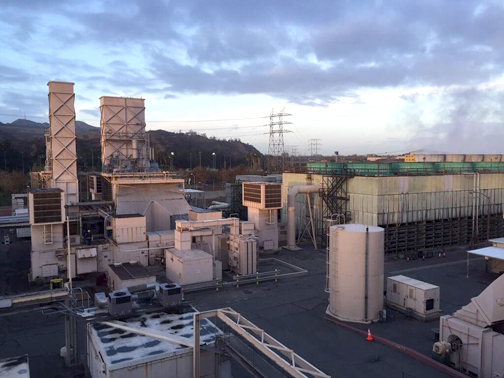
By Brian CHERNICK
Residents flooded city hall on Monday night during a special meeting of the GWP commission to express their concerns with the city’s proposed project to upgrade Glendale’s aging natural-gas power plant. Stantec consultants presented the report to Glendale Water & Power, which discussed the expected impact of noise, greenhouse gases and other hazardous materials that would be associated with overhauling the facility.
The Grayson Repowering Project proposes the removal of its existing aging generators and constructing new units at its existing location. Goals set out by City Council in 2015 asked that the replacement generators provide more reliable, sustainable and affordable power. The 76-year-old facility has undergone numerous repairs and upgrades over the years, but has not been able to fend off the steady decline in reliability and efficiency due to its aging facility. Utility experts expect the plant to fail within the next 10 years if not replaced. Seven of the eight generators, which each average 57 years of operation, would be replaced by four units that would provide an additional 43 megawatts of power to the city. GWP is currently responsible to over 88,000 electric customers throughout the city and the Grayson Power Plant is capable of providing up to 267 megawatts of local power.
Residents voiced their desire for an independent study that would explore renewable energy alternatives, arguing that the estimated $500 million project was a costly and risky investment due to California’s shift toward cleaner energy standards and away from fossil fuels.
The report analyzed a number of environmental factors, including air quality, greenhouse gases, noise, transportation and traffic among others, and found that the impact would be “less than significant” and, in some cases, would be mitigated or reduced over time by the new facility.
Over the last year, Glendale power sources ranged from renewables (47%) to hydroelectric (10%) and other carbon-free sources (7%). The remaining 36% of energy is still derived from other sources, such as coal, but the city has said it has pledged to reduce its use of coal over time.
Other points of contention with residents included the location of the power plant, which is currently in close proximity to two fault lines, and the economic implications that might present themselves in the case of surplus power generated by the facility.
The commission and utility experts assured residents that the draft report is subject to change based on the comments presented at the meeting.
“This is an opportunity when we as a city should be thinking long term,” GWP Commissionmember Sarojini Lall said echoing concerns of other members regarding Glendale’s air quality. “I am not opposed to the plant; I want to really give this more thought. But I do have these concerns and I want these issues to be wrestled with as the project unfolds. I do think we need to look at alternatives more robustly.”
Residents are encouraged to submit comments to city hall during the public comment period, which ends Nov. 3, when the city will begin to work on a final environmental impact report that is expected to be presented to city council in early 2018.
